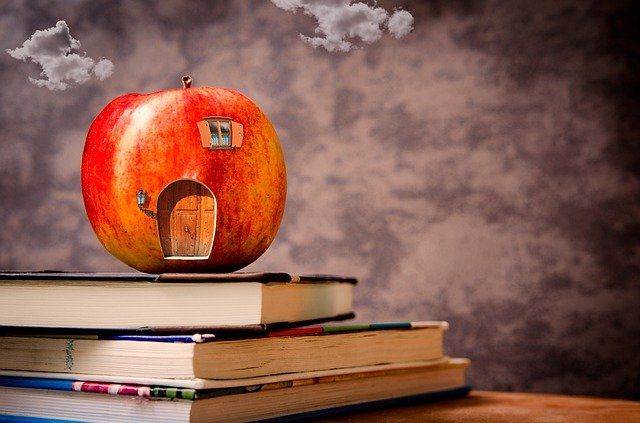The process of acquiring, ingesting, and storing information is called learning. The main objective of learning is to gain knowledge through interaction, practice, and experience that can change human behavior. Human beings are exposed to various types of learning during their lifetime. While a substantial part of it happens through the formal education that one receives in school or college, the rest happens through interaction with everything in one's environment.
Types of Learning
It's essential to know about the various learning processes that exist. We all engage in these different learning modes at every other stage of our lives. The learning techniques are acquired consciously or unconsciously. Teachers can also train students to work on these methods to effectively improve the learners' ability to use them as per the situation's demand. Before coming to the characteristics of learning, it's helpful to know the common types of learning that we engage in:
Skill Learning
This involves learning to accomplish a task efficiently. Efficiency is determined in terms of ease, speed, and the accuracy with which a learner can perform a given task. Skill learning starts right from birth, beginning with learning how to walk, talk, read, write, etc.
Perceptual Learning
This involves learning based on our ability to make sense of what we perceive around us through our sense organs i.e. what we see, hear, smell, taste, or feel. This kind of learning is enhanced by experience, and the changes it brings about in human behaviour are permanent or semi-permanent. Our ability to differentiate between shades of colours, different odours, or musical notes are examples of perceptual learning.
Conceptual Learning
Through conceptual learning, individuals grasp ideas in a way that can be transferred and applied across domains. While performing a particular activity, especially if it's something new, people are most likely to act based on their existing knowledge and understanding of a specific situation. They will make intelligent decisions for which they need to be innovative because they may not be explicitly told how to accomplish the task. Conceptual learning has an important role to play in these circumstances.
Associative Learning
This kind of learning happens when the brain links two unrelated things due to conditioning. For instance, if someone consumes a particular food item that leads to discomfort in the stomach, they will learn to associate that food with discomfort and will not want to eat it again. Also, associative learning aids conceptual learning in amassing knowledge. New concepts get linked with past ones through association and improve learning.
Appreciational Learning
Appreciational learning involves acquiring preferences, ideals, attitudes, and recognising worth and importance, which learners gain from participating in various learning activities. It involves developing a taste or liking towards certain aspects of life such as literature, art, music, etc. Teachers play a valuable role in guiding people towards acceptable values, attitudes, and ideas of the pupils' society.
Attitudinal Learning
The common disposition towards particular people, activities, or concepts is known as attitude. Attitudinal learning influences or persuades people to decide a specific desired direction.
Different Characteristics of Learning
Learning helps us to evolve. All through life, we keep learning, which impacts the way we behave and perceive things around us. The characteristics of learning are as follows:
Learning is a Continuous Process
Right from birth till death, we keep on learning. It is a universal process experienced by all living creatures. It can be direct or indirect, formal or informal. Learning helps us shape and develop knowledge, attitudes, skills, aptitudes, and habits.
Learning Induces Change
One of the key characteristics of learning is that it affects change. It helps us reconstruct ideas and combine information and skill for need-based application. The change can be desirable or undesirable, reflected in one's behaviour. It may not be apparent unless a circumstance arises for the person to respond to make the change visible.
Learning Involves Activities
We learn better when we engage in various kinds of activities. These can be either physical or mental. From taking part in mental exercises like solving numerical problems to participating in sports, every action is an opportunity for the mind to learn and assimilate knowledge and improve wisdom. The more we engage and interact with our environment, the more we learn.
Learning is Goal-Oriented
There's always a purpose behind learning. If there is no end objective, it will fail to show any result. Through learning, the aim is always to move towards a predetermined goal.
Learning Involves Observation and Training
Learning can happen through careful observation. It is a very effective way of learning. The other way is to receive formal training under a trainer, mentor, coach or teacher. Learning is helpful only when the knowledge that we assimilate through these ways can be applied effectively to understand and solve problems.
Learning through Experiences
The acquisition of experiences forms the basis of learning. New experiences impact the behaviour of learners. Learning experiences become meaningful for different types of learners when the learning experiences are related to their interests.
The characteristics of learning highlight the tremendous importance that this activity has in our lives. Our growth occurs only when we learn. There are so many different types of learners. Learning helps us turn into well-rounded individuals capable of acquiring skills that are important in helping us achieve our individual goals. Through education, learning occurs more effectively, helping us gain knowledge and wisdom that allow us to interact and engage with society in a meaningful manner. Learning helps us become purpose-driven individuals by developing the right attitude needed for personal and professional growth.
Teachmint offers the most sophisticated integrated school platform for the 21st century, bringing together the most effective elements of teaching, learning, and management together under a single roof. To know more about our features like performance management system, visit our website! Explore the range of our offerings like the lms portal.




